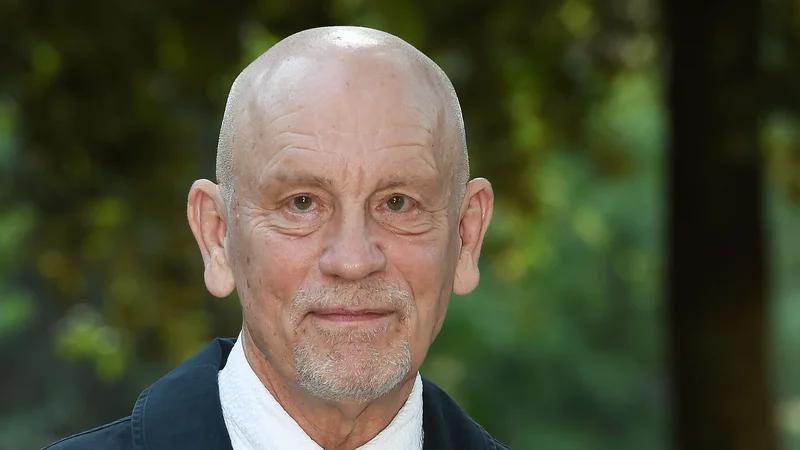John Malkovich Cast as President Snow: An Analysis of the Casting and Its Implications
The announcement landed with the precision of a well-funded marketing campaign. The Hunger Games, a media property with a valuation supported by over 100 million book sales and a global box office gross exceeding $3.4 billion, is being adapted for the stage. The production will premiere in a purpose-built, 1,200-seat venue in Canary Wharf. The lead creative team includes award-winning playwright Conor McPherson and director Matthew Dunster. These are all rational data points for a high-stakes theatrical venture.
Then came the outlier.
The role of the tyrannical President Coriolanus Snow has been cast. The actor is John Malkovich, an Oscar-nominated performer whose name carries significant weight and market recognition. But he will not be performing in the flesh. Instead, his performance will be delivered "via screen," integrated into the live show through what the producers describe as "cutting-edge technology." This is the point where a simple casting announcement becomes a fascinating case study in production strategy and asset allocation.
The initial reaction from the qualitative data set—the churn of online commentary—registered a mix of excitement and confusion. But sentiment analysis is a soft metric. The hard numbers behind this decision tell a more compelling story. The producers, a consortium including Runaway Entertainment and Lionsgate, are not merely staging a play; they are launching a product. In this context, John Malkovich is not just an actor; he is a high-value, non-depreciating asset being deployed with remarkable efficiency.
Consider the standard operating costs of securing an A-list actor for a long-term stage run. The financial outlay extends beyond salary to include accommodation, scheduling accommodations, and the inherent risk of depending on a single individual's availability and health for eight shows a week. The model is expensive and fragile. By capturing Malkovich's performance digitally, the production effectively converts a recurring operational expenditure into a one-time capital expenditure. His entire contribution can be filmed in a matter of days, then replicated flawlessly for every single performance from October 2025 onwards. The marketing value is secured; the logistical risk is eliminated. It is a strategically elegant solution.

The Calculus of a Digital Ghost: Star Power as a Financial Hedge
The Malkovich Variable
To fully appreciate the calculus here, one must look at the asset itself. John Malkovich is not an actor in semi-retirement, lending his name for a final bow. His career is an active and eclectic portfolio. Just this year, he appeared in the French indie film Mr. Blake at Your Service, playing a quiet, grieving British widower who finds solace working as a butler. It’s a role defined by humility and understated charm—the polar opposite of the totalitarian Snow. This demonstrates an artist still engaged with his craft, capable of embodying both "the psycho and the simple man," as one review noted. He brings a current, active credibility, not just legacy prestige.
His official statement on the casting is, as expected, professionally enthusiastic: "Playing President Coriolanus Snow will be thrilling, because I have long been an admirer of Suzanne Collins’s novels, the films and Conor McPherson’s writing." This is standard public relations language. The more telling statement is the production's own framing of the arrangement as an "unforgettable stage meets screen spectacle."
And this is the part of the announcement that I find genuinely puzzling from a purely analytical standpoint. The term "cutting-edge technology" is doing a lot of work here. Is this a novel application of holographic projection, real-time deepfake technology, or interactive AI? Or is it a sophisticated deployment of pre-recorded, high-definition video on strategically placed screens? The latter has been a tool in theatre for decades. My analysis suggests the innovation here is not technological, but financial. The production is packaging a cost-mitigation strategy as a feature.
This is not a criticism, but an observation of a shrewd business tactic. The venture is already absorbing the significant capital cost of a new venue, the Troubadour Canary Wharf Theatre (a 1,200-seat theatre-in-the-round designed specifically for the show). With such a high initial burn rate, de-risking other components of the production is not just wise, it's necessary. They need to guarantee a return on this massive infrastructure investment. The potential audience is enormous. The franchise has sold, as stated, over 100 million books. If ticket sales capture about 1% of that base—to be more exact, 1.2%—that’s 1.2 million people. An audience of that size would fill the theatre for a thousand consecutive performances. The Malkovich-as-digital-specter model ensures a consistent, marketable product for that entire potential run.
While the digital Malkovich provides the marketing hook, the burden of execution falls on the live cast. Mia Carragher as Katniss Everdeen, Euan Garrett as Peeta Mellark, and a large ensemble of tributes and Capitol citizens are the ones who will generate the kinetic energy of the performance night after night. They are the core product. The in-the-round staging, which seats the audience within the world of the districts (with District 12 conspicuously absent), is designed for an immersive, visceral experience. The success of the show will ultimately correlate not with the resolution of the video screens, but with the sweat and skill of these performers. Malkovich is the lure; they are the hook. It's a classic bait-and-switch, albeit a very high-end one. The audience comes for the star, but they stay for the story. The producers are betting that the power of the live performance will be sufficient to make the digital cameo feel like an enhancement, not a compromise.
An Optimized Spectacle
The decision to cast John Malkovich as a digital ghost in the machine is the most logical, financially prudent, and risk-averse move the producers could have made. It secures the marketing power of a globally recognized star while insulating the production from the immense cost and fragility of relying on his physical presence. They have optimized the deployment of a celebrity asset, treating a performance as a piece of scalable intellectual property rather than a live, ephemeral event. It’s a brilliant piece of financial engineering applied to the stage. Whether it results in compelling art is a different calculation entirely, and a variable that remains to be seen.
Reference article source:
Related Articles
Netflix's 10-for-1 Stock Split: The Official Rationale vs. The Mathematical Reality
Netflix just announced a ten-for-one stock split, and the official press release reads like a corpor...
PLTR Stock: Cathie Wood Sells, But What's the Big Picture?
Dr. Thorne: Forget the Doubters—Palantir's AI Surge is Just the Beginning! Okay, friends, buckle up....
The Truth About Dominion Energy: Stock Price, Power Outages, and Finding a Damn Phone Number
So, let me get this straight. Dominion Energy, the company that sends me a bill every month that see...
Outback Steakhouse Closing Restaurants: What Happened and Why?
Outback's Turnaround Plan: More Like a Slow-Motion Train Wreck Alright, so Outback Steakhouse is clo...
Fed's Latest Minutes: What the Data Reveals About Rate Cuts and Internal Disagreement
The Federal Open Market Committee just released the minutes from its September meeting, and if you w...
The Delivery Economy: Who's Actually Winning and the Real Cost of Convenience
Generated Title: UPS Admits Defeat, Crawls Back to USPS After Botched Delivery Strategy It’s being f...





